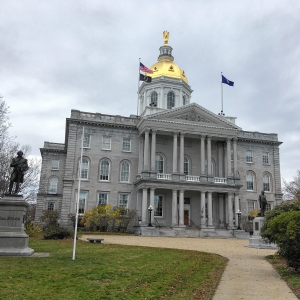From the archives: Etched by Stone
| Published: 07-01-2023 6:19 PM |
In 1820, Secretary of State John Quincy Adams noticed that the Declaration of Independence, which had been subjected to years of travel, sunlight, humidity and temperature fluctuations, improper handling, and rolling and flattening, was deteriorating.
He commissioned William J. Stone to create a facsimile (reproduction) of the original declaration, signatures and all. It took Stone three years to create a nearly exact engraved plate from which 200 official parchment copies were struck.
By June 5, 1823, almost exactly 47 years after Jefferson’s first draft of the Declaration, the Washington National Intelligencer was able to report “that Mr. William J. Stone, a respectable and enterprising Engraver of this City, has, after a labor of three years, completed a fac simile of the original of the Declaration of Independence, now in the archives of the government; that it is executed with the greatest exactness and fidelity; and that the Department of State has become the purchaser of the plate.”
The Intelligencer went on to observe: “We are very glad to hear this, for the original of that paper which ought to be immortal and imperishable, by being so much handled by copyists and curious visitors, might receive serious injury. The facility of multiplying copies of it now possessed by the Department of State will render further exposure of the original unnecessary.”
The official copies bore the identification “Engraved by W. J. Stone for the Department of State, by order” in the upper left corner followed by “of J. Q. Adams, Sec. of State July 4th 1823” in the upper right corner.
Of the 200 copies printed, fewer than three dozen remain today. In May 1824, the original copies were sent to the 24 states and the three remaining signers — Thomas Jefferson, John Adams, and Charles Carroll.
Following the War of 1812, the United States was experiencing a resurgence of patriotism. After defeating Great Britain yet again, our young nation had proven its endurance. With the fiftieth anniversary of independence nearing, Americans were drawn to symbols of our democracy. Stone’s copy is actually the most publicly recognizable version of the document. It’s what every facsimile after 1820 descended from; it’s reproduced in textbooks, popular culture, and reprints.
It embodies not only our national values but the spirit of New Hampshire. Much like our First-in-the-Nation primary, New Hampshire was the first of the colonies to declare independence from Great Britain. On Jan. 5, 1776, New Hampshire voted to create its own government, separate from the rule of the crown.
Article continues after...
Yesterday's Most Read Articles
 Concord solidifies plan to respond to homelessness
Concord solidifies plan to respond to homelessness
 Lawyers and lawmakers assert the Department of Education is on the verge of violating the law
Lawyers and lawmakers assert the Department of Education is on the verge of violating the law
 A May tradition, the Kiwanis Fair comes to Concord this weekend
A May tradition, the Kiwanis Fair comes to Concord this weekend
 Despite using federally funded math coaches, Concord math scores show little improvement
Despite using federally funded math coaches, Concord math scores show little improvement
 Concord planning board approves new casino zoning
Concord planning board approves new casino zoning
 On the trail: Biden back to N.H. next week
On the trail: Biden back to N.H. next week
The Declaration continued to serve as a symbol for freedom throughout our history. It has been invoked by countless marginalized groups seeking equal rights and has served as a beacon of hope in our darkest times. With the 250th anniversary of independence approaching, attention will again be focused on our national treasure.
From the Archives is a monthly column highlighting the history and collection of the New Hampshire State Archives, written by Ashley Miller, New Hampshire State Archivist. Miller studied history as an undergraduate at Penn State University and has a master’s degree in history and a master’s degree in archival management from Simmons College.







 Hometown Hero: Hopkinton PE teacher Jordan Whitaker ran the Boston Marathon as support runner for para-athlete
Hometown Hero: Hopkinton PE teacher Jordan Whitaker ran the Boston Marathon as support runner for para-athlete New book by Mike Pride captures NH literary era
New book by Mike Pride captures NH literary era Cottage community rebuilds beloved dock after it was destroyed in boat crash
Cottage community rebuilds beloved dock after it was destroyed in boat crash
